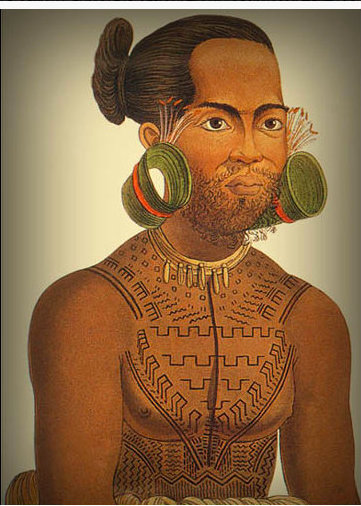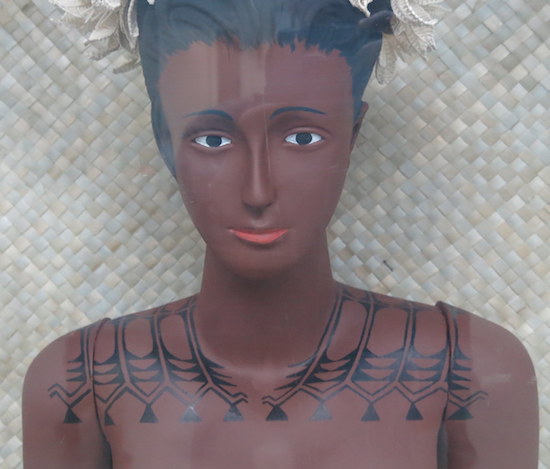Tattoos
Before the missionaries came, all Marshallese people were tattooed. This greatly impressed Captain Otto von Kotzebue, a Russian explorer, who visited the Marshall Islands in the early 1800’s and had drawings done of tattoos at that time.
Getting a tattoo was a rite of passage to man or womanhood and was believed the only attribute to be carried beyond the grave. It also served to confirm ties of family and birth. Facial tattooing, intended to conceal the wrinkles of age, was reserved for chiefs – to whom was permitted the richest and most widespread adornment. The ceremony of getting a tattoo was held to confer beauty and bring honor. The ceremony was long and extending over a month. The punctures were made with a fish-bone lance struck by a small mallet, the color was from coconut carbon. While the tattooing was in progress there was constant drumming to mask its pain and the face of the subject was covered by a mat.
The tattoo patterns used were repetitive and abstract. The elements of design were dots, straight or zigzag lines. Their meanings were taken from nature and particularly the sea and often depicted shells, waves, or fish-markings.
A man’s front torso was divided into three zones: upper and lower chest and the wavy stomach band. The vertical design which ascended from the navel was known as the Mast. Other fields had such names as Ocean Swell, Clouds or Boat. The symbols of the lower chest decoration meant waves reflected by the wind. The back also had three fields, the most important, the Big Tattooing, of heavy vertical bars, running from armpit to armpit.
Women were decorated only on their arms, shoulders and thighs. The wives of the chiefs could also have tattoos on their backs and hands.
Another Marshallese characteristic that struck the early discoverers was the extensions of the ears, considered the longest in the world. The pierced lobes could often stretch over the head. If a lobe broke it could sometimes be repaired by a graft of skin from the cheek.
Source: http://www.rmiembassyus.org 2017

Tattoo of male (Source: http://www.larskrutak.com/the-art-of-nature-tattoo-history-of-western-oceania/

Tattoo of female (Source: Alele Museum, Majuro, MH)

Ear piercings (Source: Alele Museum, Majuro, MH)
